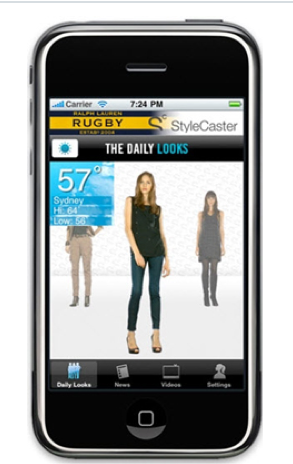Any major fashion designer will tell you that fashion is meant to be an experience. Ideally, it’s one that makes consumers feel so trendy, sophisticated and confident that they’re compelled to buy more.
It’s hard to replicate that experience online, so it’s no surprise that the fashion industry has been relatively slow to adapt social media into its advertising and marketing strategies. However, as more designers and brands embrace social media and create new channels for consumers to engage and provide feedback, the fashion industry is seeing a reinvigoration of brand loyalty.
While most major brands have established a presence on Facebook and Twitter, there are a select few that have demonstrated real innovation and creativity as they leverage these platforms. Here’s a brief look into what brands and personalities are most “fashionable” on social media.
Blog, Blog, Fashion, Baby
Fashion bloggers are emerging as thought leaders in the industry, and brands are turning to them not only to test and offer feedback on their products, but also to act as a liaison between themselves and their target consumers. These relationships have proved invaluable for luxury brands who are working to maintain sales and keep costs low during difficult economic times.
For example, Rebecca Minkoff, a popular handbag designer, has received praise not only for her blog, but also for establishing strong relationships with fashion bloggers. For example, Minkoff, who runs her own Twitter account, tweeted at blogger Maria Morales, complimenting her on a post that featured one of her handbags. Needless to say, Morales maintained her brand loyalty, and continued to promote the brand in her posts.
These types of connections have also provided bloggers with the opportunity to step out from behind their computers and into the fashion spotlight. Tavi Gevinson, the 15-year-old creator of The Style Rookie blog, has achieved such widespread media notoriety that she was invited to attend New York Fashion Week and has collaborated with brands such as Rodarte and Borders & Frontiers on their fashion lines.
From Runway Trends to Trending Topics
Twitter has been integral in making the illustrious world of high fashion more accessible, personal, and engaging to consumers. Often, designers see success on Twitter when they operate their own accounts. In a similar fashion, brands that have a single, recognizable point person handling their social media presence often see higher brand loyalty among customers.
DKNY presents a perfect example. The company’s Senior Vice President of Global Communications, Aliza Licht, is best known as DKNY PR Girl (@DKNY) to customers. She maintained her anonymity from 2009 until October 2011, when she revealed her identity in a YouTube video .
What sets Licht apart from other fashion publicists is that she doesn’t use Twitter simply to push out content about DKNY and its current projects. She leverages it as a way to connect with customers and followers who aspire to work in the fashion industry by being highly responsive to tweets, sharing her “PR 101” advice on her Tumblr , and providing a behind-the-scenes glimpse into the fashion industry that allows consumers to build stronger brand love. In addition, Licht stays geniune by tweeting witty, personal updates on her life, showing the very human side of a massive fashion empire.
Twitter has also established a presence at major events in the fashion world, such as Fashion Week. Burberry broke barriers by live-tweeting photographs of models just before they stepped on the catwalk at London Fashion Week. The strategy, the brainchild of Burberry Creative Director Christopher Bailey, gave consumers an unprecedented look behind the scenes, and they showed their gratitude by catapulting “#Burberry” to the second most trending topic on Twitter during the fashion show.
Fashion on the Go: Mobile Apps
Mobile applications are revolutionizing the shopping and buying experience . StyleCaster’s mobile app provides users with daily styled looks based on weather conditions, a product catalogue, and a newsroom feature to help them stay abreast of fashion news and trends.
Macy’s offers a “Backstage Pass” that has successfully leveraged the sometimes-questionable QR code strategy. Using the app, customers can capture QR codes throughout the store that lead to short video segments featuring designers and celebrities offering style tips. To top it off, every time a customer a snaps a QR code, he or she is entered to win a $500 shopping spree.
Whether companies are aiming to increase brand passion and loyalty or just trying to promote their latest fall line, it’s clear that the social media runway is quickly becoming the one that more and more fashion brands want to walk.
Pinterest Possibilities
While it’s a bit early to tell if Pinterest will be effective in driving sales, it’s already revolutionizing the way people shop. E-commerce site Gilt recently launched a “Pin It to Unlock” feature that allows users to purchase a product once it has been pinned 50 times on Pinterest.
The rate at which top brands are going social is hard to keep up with, and many are constantly creating innovative ways to connect with consumers. Is your favorite brand using a brilliant social media strategy? Share it in the comments section!



